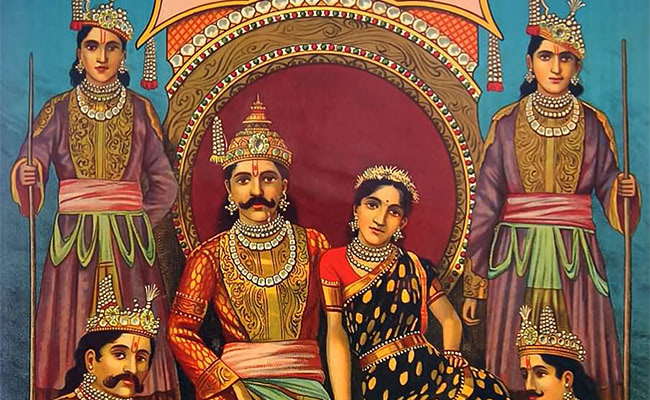When imagining the artificial womb, we look to what ancient myths have to offer. One of the earliest references to ex vivo birth can be found in ancient Indian Sanskrit epics, dated 400BCE.
The age-old myth narrates the story of the Queen Gandhara, wife of King Dhrita-rashtra. She was unable to have children, while her brother-in-law's wife, Kunthi, gave birth to five babies, who were destined to become Pandavas afterwards. Gandhara got very jealous of Kunthi and smacked Kunthi's pregnant belly, causing a miscarriage. But the miscarriage did not kill the fetus, it shattered it into 100 pieces of alive babies. These "babies" were placed in "jars of ghee" (clarified butter) by Saint Veda Vyasa, her father-in-law. The 100 "babies" eventually became 100 princes, famously known as the 100 Kaurava Princes.
It is no coincidence that the 100 princes were bred in jars of ghee. In 400BCE, when people shared the sacrificial meal with each other, they did not sacrifice animals but used milk and clarified butter (ghee) instead. It makes sense then to put the offspring into the holiest of substances.
Indians are not the only ones telling myths featuring babies born in "miraculous ways", the same phenomenon can be found in many other cultures. This mirrors our grand interest in decoding the mystery of childbirth and motherhood cross culture. These stories mostly don't have much scientific support, but they shaped birth rituals around the world. Whatever our belief is towards childbirth, it is an essential part of our collective history and individual cultural identity.
This article is part of the Artificial Womb research project by NNN. The goal of this project is to develop thought-provoking scenarios that facilitate a much-needed discussion about the way technology radically alters our attitude towards reproduction, gender, relationships and love in the 21st century. We highly value your feedback or input, contributions can be sent to womb@nextnature.net.
Image: Findmessages.com

Share your thoughts and join the technology debate!
Be the first to comment